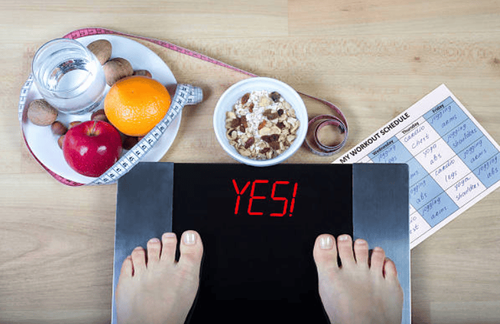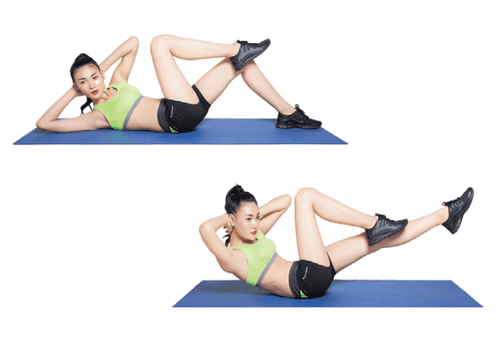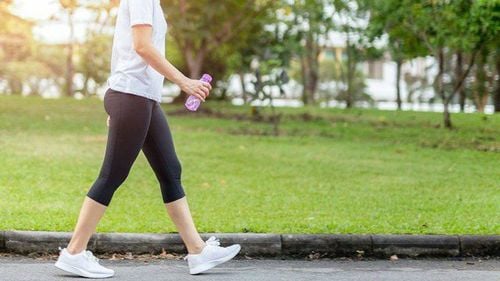This is an automatically translated article.
A comprehensive exercise schedule is essential for beginners, including both self-training and coaching. The following five factors help balance your exercise schedule, keep you healthy, and optimize athletic training results.1. Aerobic or cardio?
Aerobic exercise, also known as cardio or aerobics, is the foundation of most athletic training programs. Aerobic or aerobics makes you breathe faster and deeper, which maximizes the amount of oxygen in your blood. Your heart will beat faster, increasing blood flow to your muscles and back to your lungs.The more you do aerobic or cardio, the more efficient the process of transporting oxygen throughout the body of the heart, lungs and blood vessels will be. As a result, you will easily complete common physical tasks and overcome unexpected challenges, such as rushing to the roof when it suddenly rains.
Aerobic exercise includes all physical activity that requires use of large muscle groups and increases the heart rate. You can try walking, jogging, biking, swimming, dancing, water aerobics - even raking leaves, cleaning the garden and vacuuming.
For most healthy adults, the Department of Health recommends at least 150 minutes of moderate aerobic activity or 75 minutes of vigorous cardio per week, or a combination of moderate and vigorous activity. The guidelines also recommend that you do these exercises evenly over the course of a week. You can even break it down into short periods of exercise and aim to move more throughout the day. Any form of exercise is better than none.
You can also try high-intensity interval training, which involves alternating high-intensity activities (about 30 seconds) with recovery periods of lighter activities (about 3-4 minutes). For example, you can alternate periods of brisk walking with periods of slow walking, or do short bursts of jogging full of brisk walks.
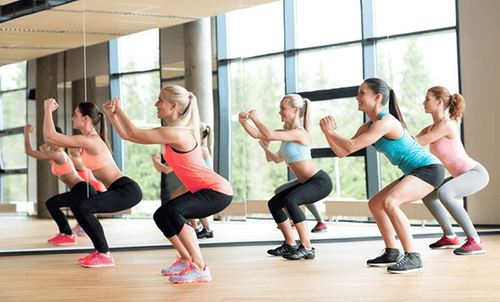
Bài tập aerobic bao gồm tất cả những hoạt động thể chất cần sử dụng các nhóm cơ lớn và làm tăng nhịp tim
2. Train your body muscles
Muscle training is an important component of a sport-fitness training program. Strength training can help you strengthen your bones and muscles, as well as manage or lose weight. This form of exercise will also improve your ability to carry out normal day-to-day activities. Try to make it a habit to train all major muscle groups at least twice a week.Most fitness centers provide muscle machines, free weights and other equipment for strength training. However, you don't have to become a gym membership, work out with a trainer, or invest in expensive equipment to reap the benefits of strength training.
Homemade dumbbells, such as plastic water bottles filled with water or sand, can also be used. Specialized sports elastic bands are another cost-effective option. Your body weight also counts when performing exercises: push-ups, pull-ups, sit-ups and squats.

Rèn luyện cơ bắp là một thành phần quan trọng của một chương trình huấn luyện thể thao
3. Core exercise
The muscles in the abdomen, lower back, and pelvis are called the core muscles, which help protect the back and connect the movements of the upper and lower body. Core strength is a key element of a comprehensive fitness program, often incorporated into training plans by exercise coaches.These exercises help train the muscles to protect the spine and allow you to use your upper and lower muscles more effectively. Core exercises that simply use the torso, such as bridge, plank, sit-ups, and ball exercises.
4. Balance
Overall, balance exercises are necessary at any age. Older adults in particular should perform these exercises daily to maintain or improve balance. This is important because balance tends to deteriorate with age, leading to an increased risk of falls and fractures. Balance exercises can help prevent falls in the elderly and maintain independence (without the need for a cane or assistance).However, all ages can benefit from balance training to help stabilize core muscles. Try to stand on one foot for incremental intervals to improve overall stability. Activities like tai chi can also promote balance.
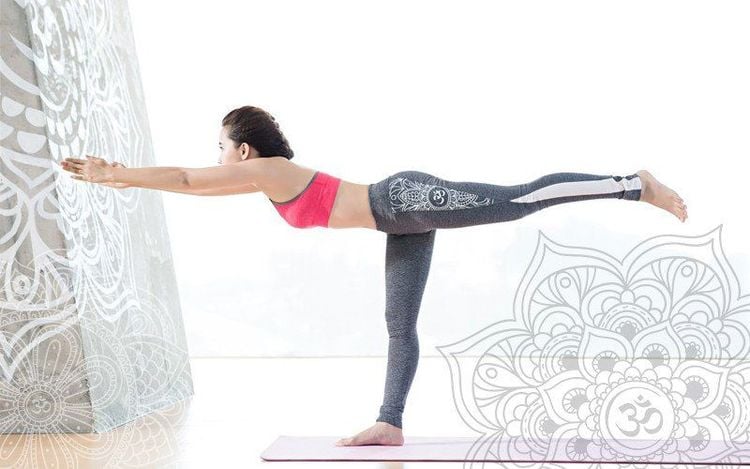
Nhìn chung, các bài tập giúp giữ thăng bằng là cần thiết ở mọi lứa tuổi
5. Tough and stretchy
Endurance is an important aspect of athletic training, so you should include stretching and flexibility activities in your exercise program. Stretching exercises can help increase flexibility, making it easier to perform many daily activities that require flexibility. In addition, stretching can also improve joint range of motion and promote better postural correction. Stretching your tendons regularly can even help reduce stress and tension.You should do stretching after exercise - when your muscles are warm and easy to stretch. But if you want to stretch before a workout, warm up first by walking or exercising for 5 to 10 minutes before stretching. Ideally, stretch your muscles whenever you exercise. If you don't exercise regularly, you can stretch at least 2-3 times a week after a warm-up to maintain flexibility. Activities like yoga also promote flexibility.
Whether you already have your own exercise program or work out with a personal trainer, your overall fitness plan should include some of the elements listed above. Try to combine aerobic exercises, strengthen core and core muscles, improve balance, flexibility and stretch. It's not necessary to include all of these elements in every exercise session, but alternating and regular will help you improve your overall fitness.
Please dial HOTLINE for more information or register for an appointment HERE. Download MyVinmec app to make appointments faster and to manage your bookings easily.
Reference source: mayoclinic.org



